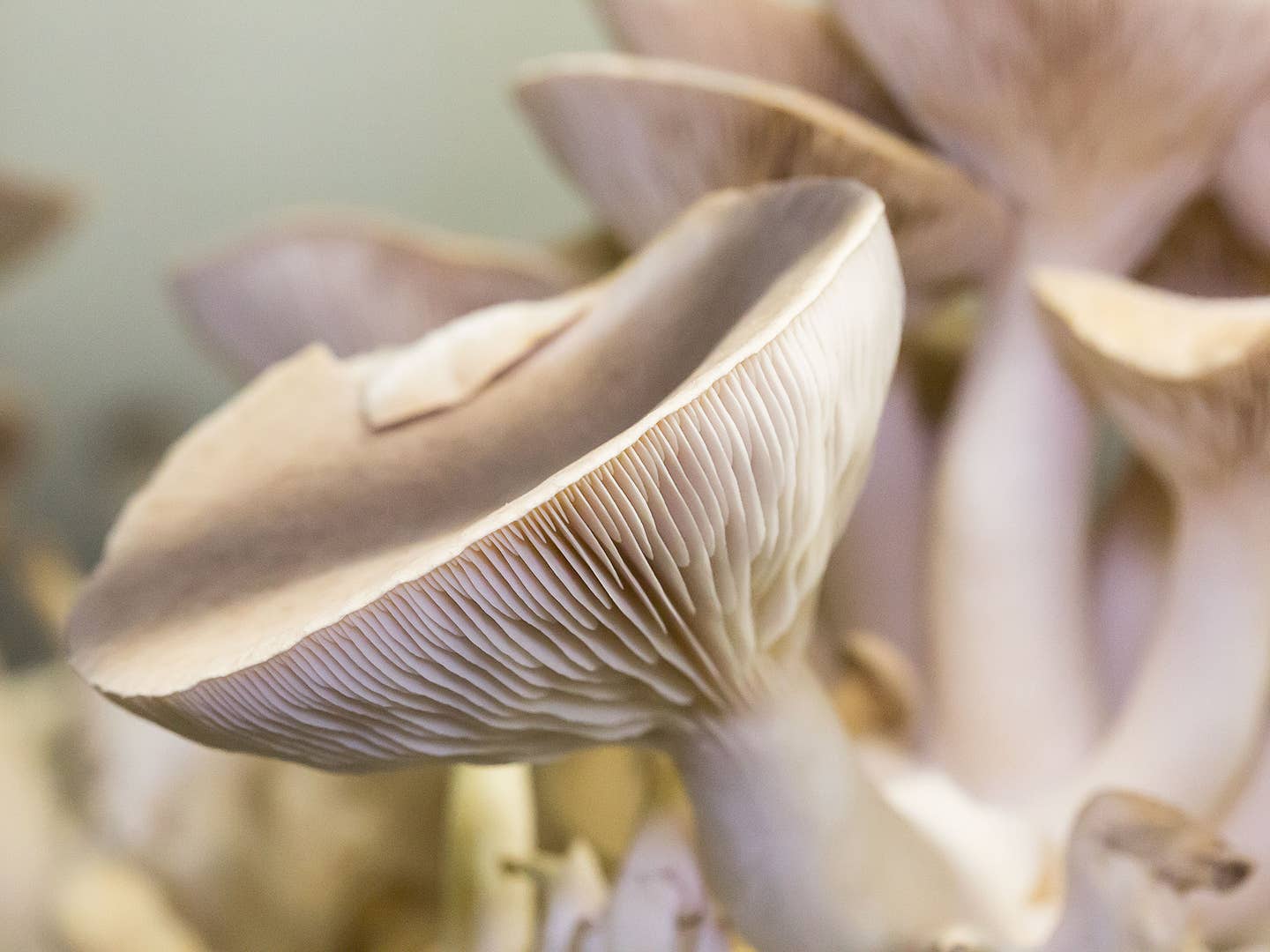
A Trip to the Alien Planet That Grows America’s Mushrooms
Chester County, Pennsylvania produces a whopping half of all the mushrooms in the United States, and its spooky farms don’t look like anything else on Earth
We’re standing in a dark hut marked #5 wearing squeaky rubber boots and brightly colored hairnets, but looking around, it feels like we should be wearing space suits. In every direction, shaggy brown masses are propped up on cold metal shelves stretching as far as the eye can see, and mist tumbles through the shadows they cast. Upon each mass, thousands of alien creatures have sprung up in clusters, their beady, rounded tops poking into the fog. The air is thick, cool, and downright wet, and it’s filling our nostrils with the deeply earthy scent of lots and lots of fungus.
This is one of the dozens of mushroom houses built by Phillips Mushroom Farm in Kennett Square, Pennsylvania—currently the largest American grower of specialty mushrooms like maitake, beech, and enoki. These caverns produce a whopping 35 million pounds of mushrooms a year, in the middle of the mushroom capital of the United States.
Although 23 different states farm mushrooms commercially in the U.S., Pennsylvania is behind a whopping 44 percent of every... single... mushroom… that lands on grocery store shelves. In 2015, the American total was 946 million pounds, or $1.19 billion worth of fungus. And of the 68 mushroom farms in Pennsylvania, 61 of them are in Chester County, where Kennett Square is located. If you’ve eaten a mushroom in the past week, odds are it came from around here.
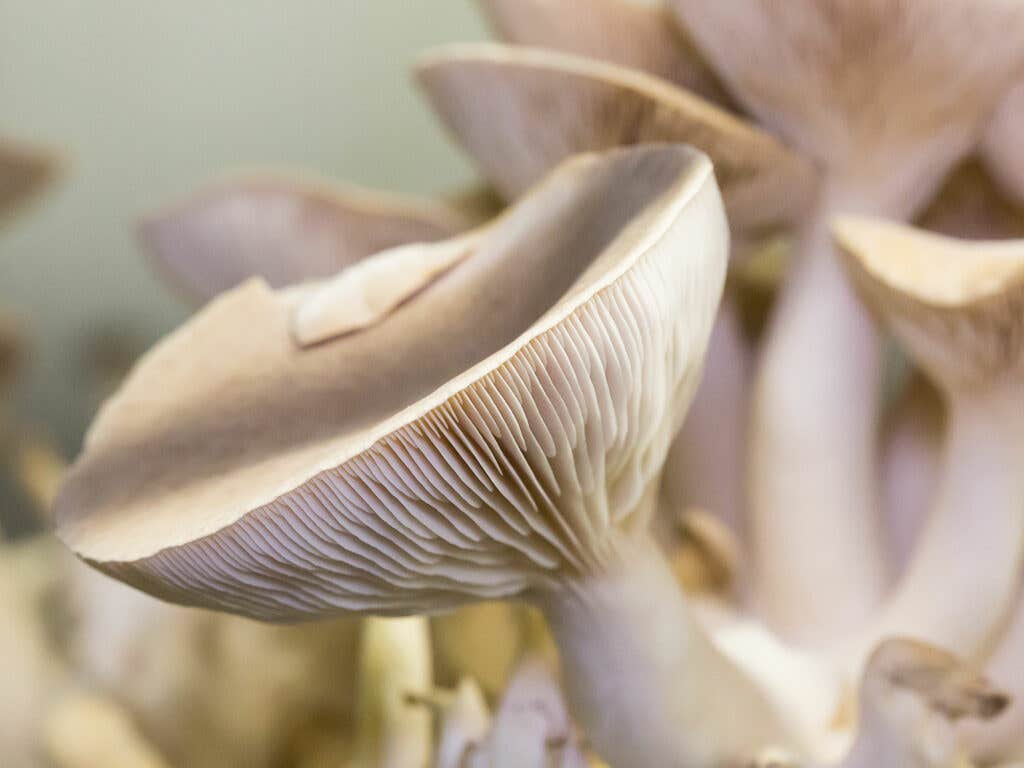
Mushroom farms look nothing like other commercial farms—or any human place of work you might have seen for that matter. Mushrooms thrive in dark, damp environments—mesmerizing moon bases of sorts—where the crops are stacked tiers high in wooden beds or grow vertically up tall columns, rooted in carefully maintained sterilized compost. The beds look like the National Archives of fungus; the columns a cat playground from outer space.
Protection from the elements doesn’t mean mushrooms are easy to grow. Quite the opposite: Moisture imbalances and naturally fluctuating seasonal temperatures can throw crop growth completely out of whack, potentially resulting in dangerous contaminations or cripplingly low yields.
Despite the risks, the specialty mushroom market is soaring: The value of the 2015-2016 season totaled $95 million, a 30 percent increase from the year before. But it wasn’t always that way.
“We were practically giving them away at first,” says Jim Angelucci—the manager at Phillips and our guide for the day—of the farm’s first attempts to introduce portobello and shiitake mushrooms into the American market in the 1980s. Today, these two mushrooms are the most popular of the specialty kinds, but the farm’s catalogue has expanded to oyster mushrooms in an Alice in Wonderland array of colors and sizes, pom pom mushrooms (which are entirely stemless and look like plump, headless pomeranians when they grow), and thick and meaty royal trumpet mushrooms, also known as king trumpets.
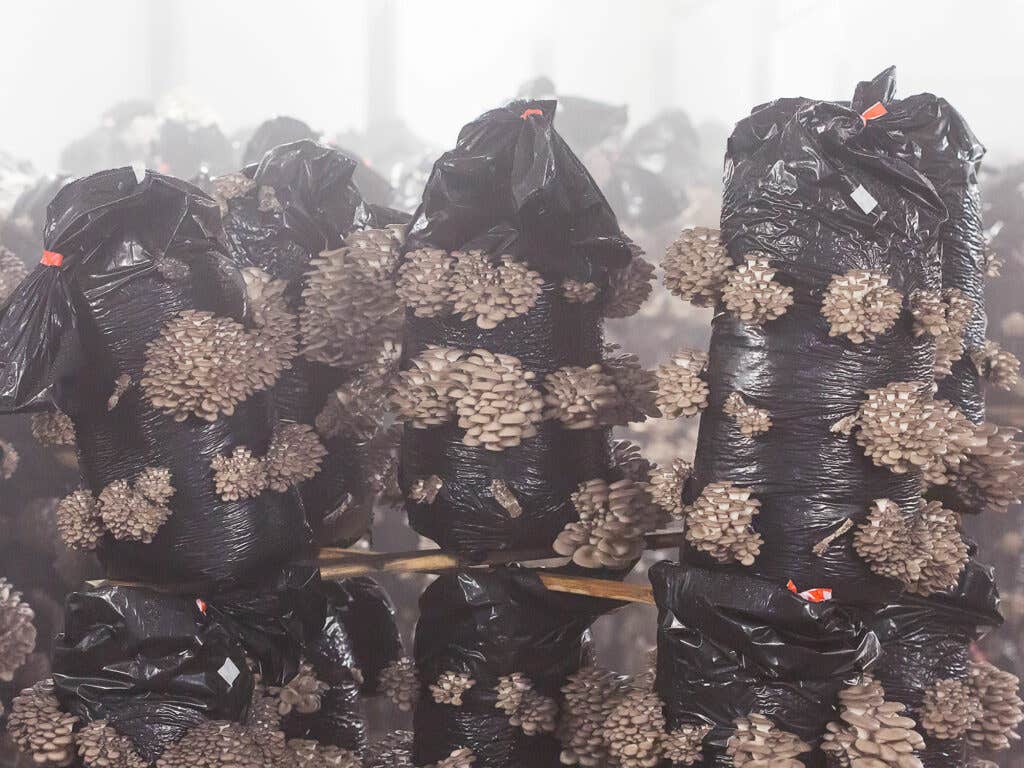
Mushroom farming has fascinated Pennsylvanians in the area for over a century. Commercial farms in the county have been growing and selling mushrooms since 1896, when legend has it the son of a flower grower used some space leftover from his father’s carnation beds to spawn mushrooms. More and more flower and vegetable farmers began adding ‘shrooms to their greenhouses, using manure and compost from nearby racetracks and horse stables as planting beds. And since then, farmers at places like Phillips have gotten it down to a science.
“Mushrooms breathe just like we do—they take in oxygen and give off CO2,” Angelucci says, as he walks us through the shiitake area. All around us, heavy sets of doors reminiscent of the walk-in refrigerators in restaurants lead to rooms where the fluffy mushrooms grow in their own independent, precisely monitored ecosystems.
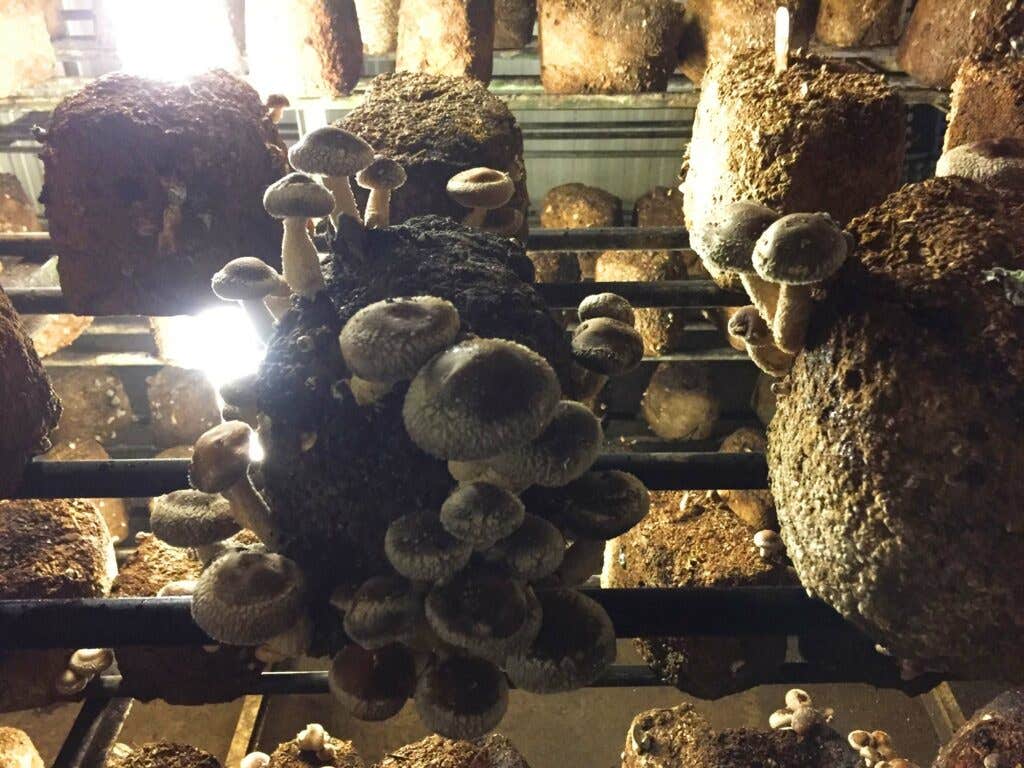
The majority look like a quirky cross between Willy Wonka’s factory and a hospital operating room, with pods of supernatural-looking creatures springing up among the perfectly packed compost, folks wearing protective head coverings, and heavy-duty filters constantly scrubbing the air of impurities. Unfiltered air could contaminate the mushrooms in less than a week, and each variety demands its own ambient humidity.
That’s a lot of pampering for a mushroom, but it’s an efficient system. “Everything is grown on agricultural waste,” Angelucci explains. Phillips feeds its mushrooms with sawdust from saw mills, cotton gin byproducts, ground-up (and inedible) wheat straw and stalks, and the like. The room we’re standing in now has 10,000 shiitake logs built largely out of red oak sawdust, millet grain, and wheat bran—which adds nutrients like protein and nitrogen. They look spongy but feel surprisingly firm to the touch. As we creak open more heavy doors and walk through the foggy rooms, a fat droplet of water from the drippy ceiling hits my notepad, making a smear of black ink in the center of the page.
At nearby To-Jo Mushrooms, a large-scale but family-owned operation, the focus is pedestrian button mushrooms, but the production and processing is no less fascinating.
We circle the compost fields, where so much of the important prep work is done. The mounds of around 10 carefully mixed ingredients, from corn cobs to cacao shells to chicken manure, take around two and a half weeks to break down, all the while being turned and aerated for sterilization and uniformity. As we talk, specks of organic compost materials flutter around us like snowflakes.
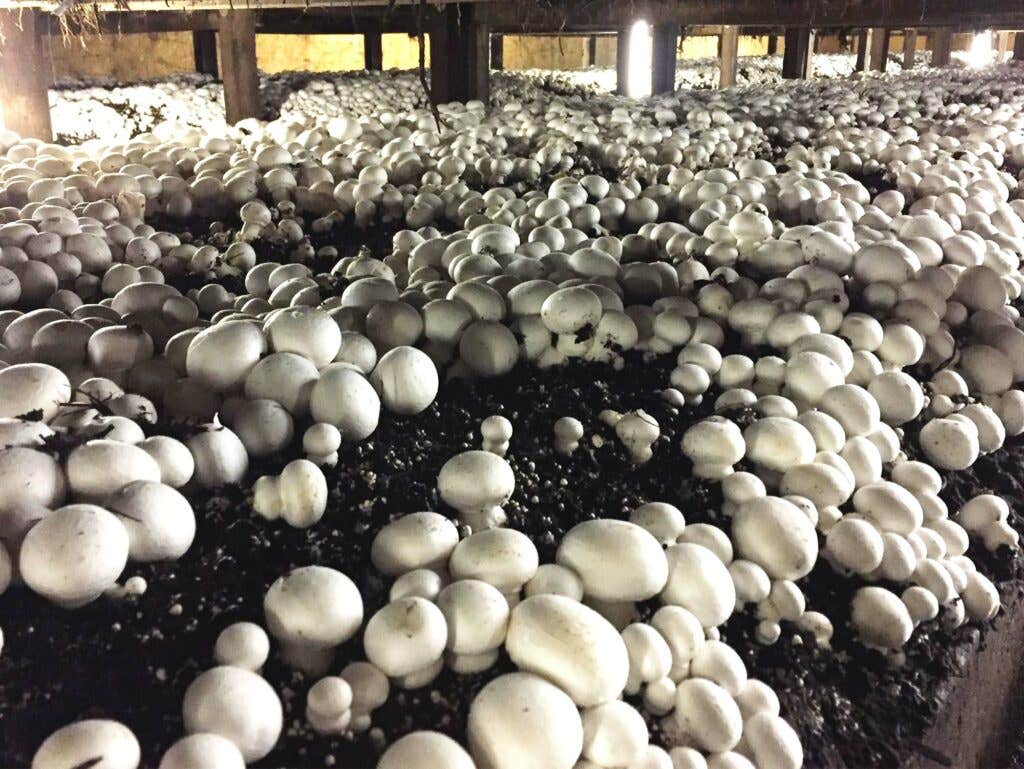
I’m handed a three-inch flashlight when we head into the growing house. In room #21, the pristine white mushrooms are about two inches tall and two inches wide, right around the ideal size for inspection, weighing, and grading. Though the beds are spawned with literally millions of microscopic seeds, the growers weed them out precisely to allow for the mushrooms to grow without touching each other at all—the only way to maintain the caps’ pure white color and baby-soft texture.
“Indoor grown mushrooms are only seasonal in terms of the demand for them,” says Peter Wilder, director of marketing at To-Jo. “Around the holidays, we ramp up production a bit.” But typically the farm picks and processes 800,000 pounds a week on average, rushing them out the door between 24 and 36 hours of picking to maintain their pristine condition. We walk through the shipping and packing facility, where hundreds of thousands of mushrooms whir through a maze of assembly lines and into colorful crates and packages where they’re then tagged with their origins and shipped to grocery store shelves.
In this chilly area kept at around 40°F, we can see plumes of our breath out in front of us, but we don’t think a thing of it: The creepy-cool vibe is all part of the magic of mushroomland.
Keep Reading
Continue to Next Story










